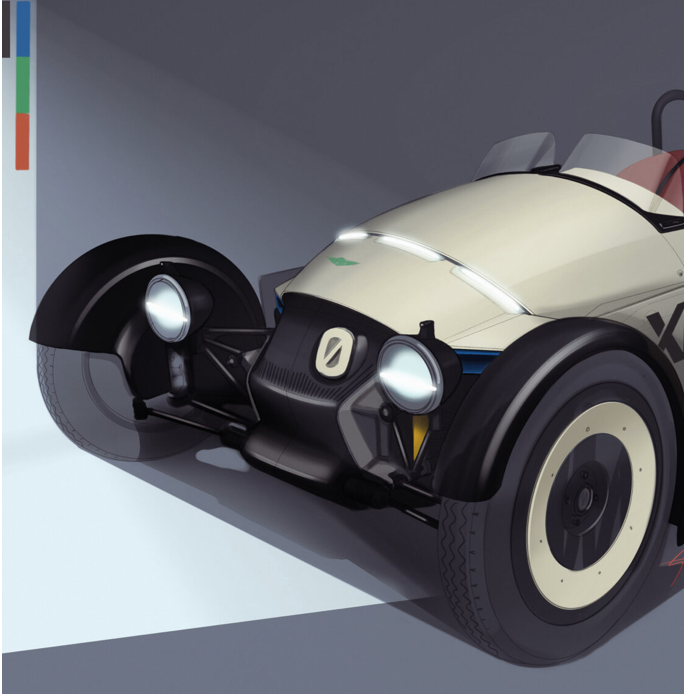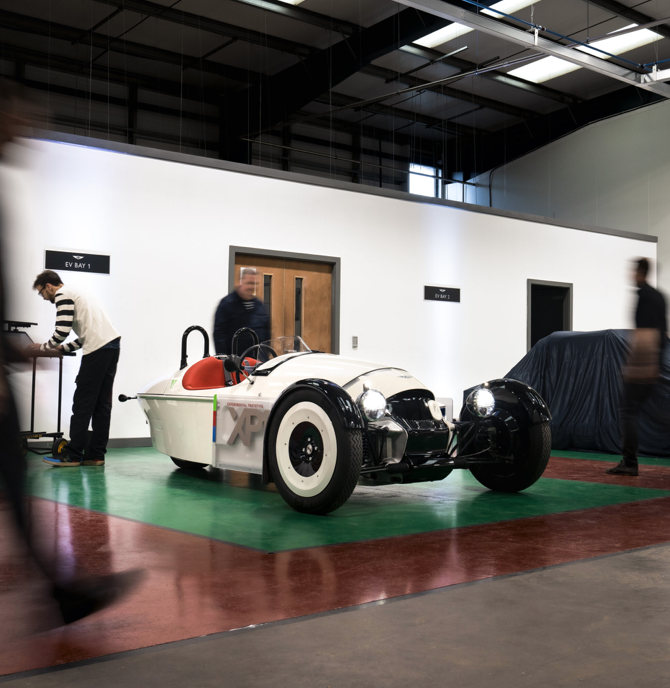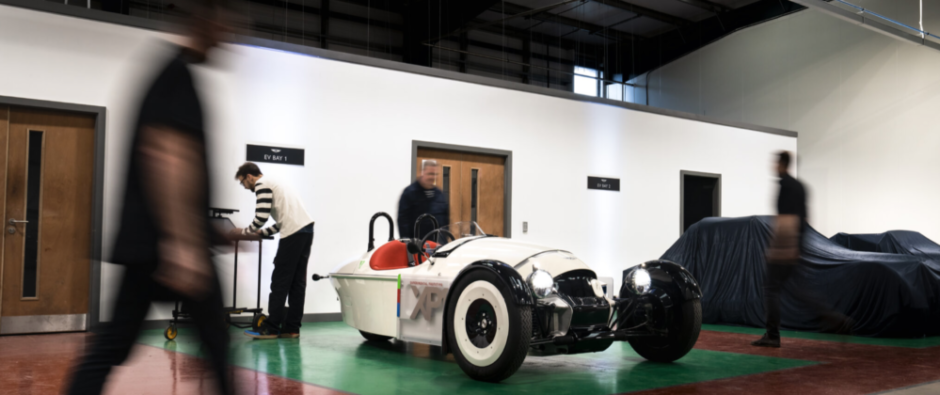MORGAN LOOKS TO ELECTRIFIED FUTURE WITH XP-1P-1
Morgan Motor Company sets its sights on an electrifying future, unveiling insights into an upcoming developmental vehicle destined to lead the charge for all forthcoming electric Morgan sports cars. Termed as ‘XP-1’, this experimental prototype stands as a crucial resource, furnishing vital data to Morgan’s cadre of engineers and designers, spearheading the creation of the company’s inaugural line of electric models. Crafted over a meticulous 12-month span by Morgan’s adept team of engineers stationed in Malvern, Worcestershire, XP-1 takes root in the formidable aluminium platform of the Super 3.

The striking prototype is not intended for production but has been created to enhance thinking in several key areas including driving characterisation, powertrain development, in-house EV competence and training, and new feature ideation and testing. Following 12 months of design and build, XP-1 will now embark on a comprehensive testing programme during the next 18-24 months, undergoing continual evolution to test new technology and features.
Matt Hole, Chief Technical Officer, Morgan Motor Company, said: “We are immensely proud to be sharing XP-1 with the world and showcasing some of the first class engineering that takes place behind the scenes at Morgan. As we embark on our electric journey, this prototype will become a focal point of the engineering and design process, providing a wealth of insight and helping to build up our in-house EV capability. We are in no doubt that we can ensure future electric Morgan sports cars retain the core appeal of our current range, meaning they are fun to drive, lightweight, handcrafted and bespoke. We will be relentless in our pursuit of preserving these characteristics for our customers for generations to come. Because it is not tied to a product, XP-1 provides the unique ability for our audience to join us throughout this exciting learning phase, and we look forward to sharing future updates over the coming months.”

XP-1’s battery, motor and inverter combination represents Morgan’s first powertrain, internal combustion or battery electric. The powertrain, engineered specifically for XP-1, gives Morgan’s engineers complete control of calibrations that vary the throttle and regeneration level at different speeds, in order to create a range of driving modes featuring a mix of driving characteristics. To aid with the identification of suitable component combinations for the powertrain – both for XP-1 and future Morgan electric models – an in-house developed full vehicle toolchain has been created. This toolchain is key to modelling the compatibility and suitability of a range of different powertrain components, calculating the range prediction algorithm and simulating different scenarios that can help the company to benchmark against future requirements.
Ensuring that future electric Morgan sports cars are lightweight – as they have been throughout the company’s 114 year history – is a key requirement. This weight requirement is fundamental in the decision for the company to create its own powertrain combination, working with key partners and utilising industry leading components. As such, XP-1’s weight is comparable to that of the production car it is based on.
XP-1 is Combined Charging System (CCS) enabled for fast charging and features bi-directional charging capability, two important features that will help to futureproof the company’s ongoing development activity. Further to this, and related directly to electric vehicle requirements, XP-1 is also the first ever Morgan to be fitted with an electronic park brake (EPB).
Beyond experimentation with driving characteristics and powertrain, XP-1 has also allowed Morgan to develop a further understanding of wider EV technology and design, specifically aerodynamics. XP-1 features front end aerodynamic improvements for increased range and efficiency, these experimental modifications have resulted in a 33% reduction of drag coefficient.
A bespoke interior display allows for user interface (UI) experimentation. XP-1’s display will continually evolve, allowing engineers and designers to gather feedback on how users interact with the vehicle, and the best way to communicate key vehicle information in future sports cars. Other experimental features include external charge level indicator LEDs surrounding the front cowl and new aerodynamic wheel trims.
In bringing the XP-1 project to fruition, Morgan also begins the extensive process of workforce training and infrastructure adaptation. Due to the company’s coachbuilding production methods, the creation of this internal knowledgebase is vital for the future production of electric Morgan sports cars, and will centre around workshop readiness to build electric vehicles, training for high voltage systems handling and installation of charging infrastructure.
XP-1 continues Morgan’s core principle of developing cars with an undiluted driving experience. As XP-1 evolves, so will its story. As a presentable prototype, it will become a visible project that takes the Morgan community along on the company’s journey to electrification. Sports car fans can expect periodic instalments and to see the vehicle popping up at events, both at Morgan’s factory and further afield.







